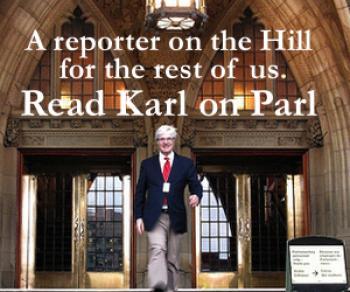By his own account, Senator Mike Duffy is easily confused.
He told a Prince Edward Island television interviewer that he finds the Senate’s “Declaration of Primary and Secondary Residences” form to be confusing.
“I wish I had it with me,” he said during the recently broadcast interview.
Then, one assumes, the Senator and the interviewer would both be happily confused together.
But how confusing is that form, really?
This writer would not rate his intelligence above that of the Senator. Yet he read the rather terse and straightforward one page form, and is not even a bit befuddled.
You can find the relevant form on page 34 of the Senate Travel Policy.
It is, officially, “Appendix E” to that rather long document. You can find it just after “Appendix D” (the International Travel Application) and just before “Appendix F” (the Designated Traveller and Dependent Children Annual Declaration).
It depends, it seems, on your definition of ‘resident’
The form Duffy found so confusing asks first of all if a Senator’s primary residence is within 100 kilometres or more than 100 kilometres from Parliament Hill.
You don’t need an advanced degree in geography to figure that out.
For instance, if you live, as Senator Duffy now admits he does, in the Ottawa suburb of Kanata, you are about 20 kilometres from Parliament Hill, maybe less.
The form then asks for the address of the Senator’s primary residence in the province or territory he or she represents.
And that’s what seems to have been the hang-up for Duffy.
The Senator originally gave an address in Cavendish, Prince Edward Island, and because he declared that to be his primary residence said that he lived more than 100 kilometres from Parliament Hill. He then merrily claimed the allowance to which Senators are entitled for secondary residences in the National Capital Region.
The Senator knew all along that he did not live, primarily, on the Island.
He now argues that while he may “live” in Ontario, his “heart is in PEI.”
The Senate residency form, unfortunately, does not, anywhere, ask: “Where does your heart reside?”
The self-styled “Duffster” will now repay the many thousands of dollars in secondary residence allowance he had happily pocketed when nobody was paying too close attention.
The BNA Act may be the real problem for Duffy (and Harper)
But Duffy and the Prime Minister still have another problem, and that problem is called the British North America (BNA) Act.
Canada’s original constitution clearly states, in article 23, that a Senator “shall be resident in the Province for which he is appointed.”
In making his original claim, Duffy may have been aware of that pesky constitutional requirement.
That may be why he tried to create the impression that he really did live on the Island.
To give credence to that impression, Duffy, logically, claimed the money for his “secondary” residence in the Ottawa suburb.
Now, Duffy says, though he may not be a “resident” of PEI as we normally understand that not-overly-confusing concept, he is still, somehow — and simultaneously — sufficiently a resident of Canada’s smallest province to satisfy the constitutional requirement for Senators.
In 1867 there were no driver’s licences, health cards or even income tax.
We cannot say with any exactitude what the framers of the constitution meant by “resident” some 146 years ago.
Today, however, at least some well-qualified and well-informed folks take the position that a resident is a resident is a resident — and that a “BNA Act resident” is no different from any other kind of resident.
In a recent CBC Radio interview, retired Progressive Conservative Senator Lowell Murray opined that if Duffy is not a legal resident of PEI he might very well not have the constitutional right to represent that province in the Senate.
Murray — who held various cabinet posts in Mulroney’s government and was for a time Government Leader in the Senate — does not seem to think there are two meanings to the word “resident.” In the radio interview, he seemed to be arguing that to be a resident, as the BNA Act understands it, a Senator must actually live, vote and pay taxes in the province he or she represents.
If Murray is right, Duffy and the man who boosted him into the Red Chamber could be in a constitutional pickle.
Where ‘the heart’ resides
It is all a bit murky — and there seems to be no authority mandated to define “resident” for the purposes of Senate membership.
What makes matters even more touchy is that the Duffster may not be the only one on constitutional thin ice here.
Senator Pamela Wallin represents Saskatchewan and, by her account and the accounts of her many Saskatchewan fans, spends a good deal of time there.
But is she, legally, a “resident” of Saskatchewan? There have been some suggestions that Wallin’s principal residence is, in fact, in Toronto, where she was living and working when Harper named her to the Senate.
Did she, when appointed to the Senate, legally relocate back to her home province?
We don’t know.
Of course, like Duffy’s, Wallin’s heart is most unequivocally back home in Wadena, Sask., where she was born and raised.
It’s just too bad that, as with the Senate’s residency rules, the BNA Act has no provision for “where one’s heart resides”!



